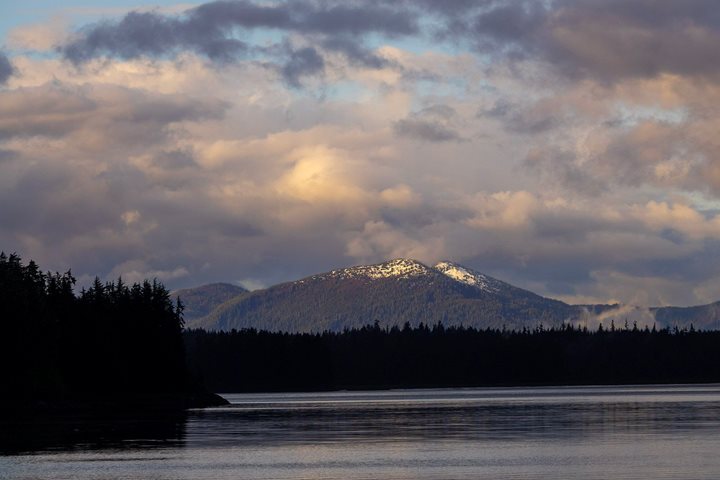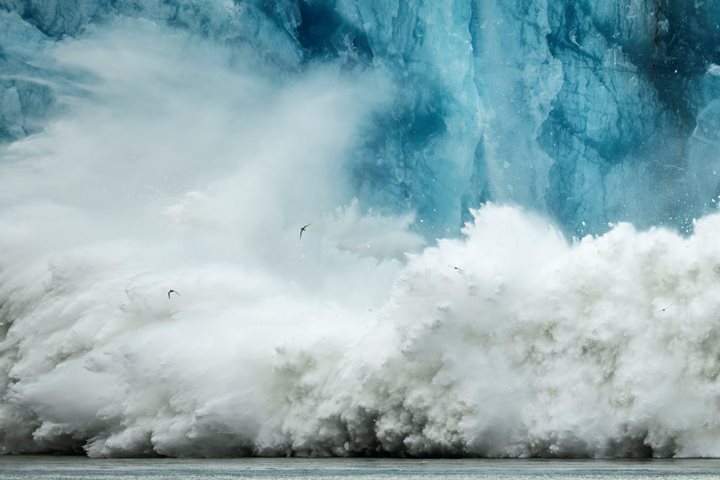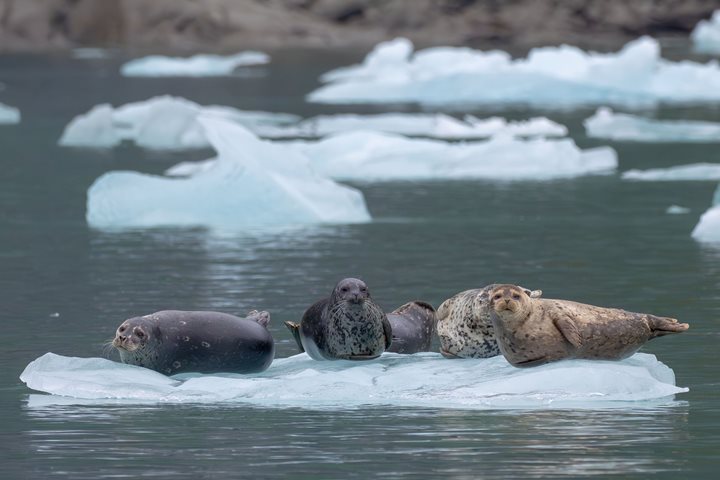What a better way to celebrate America’s birthday than exploring its public lands! The final day of our voyage took us to Misty Fjords, a national monument comprising of more than 2 million acres of undeveloped forests, granite cliffs, and glacial fjords. The highlight was dipping into Rudyard Bay and the appropriately named, “God’s Pocket” at the head of the fjord. We deployed Zodiacs to better explore this little gem and found a host of marbled murrelets and harbor seals waiting for us. In a few weeks the rivers of this fjord will be swollen with salmon, the heartbeat of this temperate rainforest. It’s hard to imagine a better way to finish our unforgettable few days along this miraculous rainforest as we weigh anchor and make our way towards Ketchikan.
- Daily Expedition Reports
- 04 Jul 2024
Misty Fjords, Alaska, 7/4/2024, National Geographic Sea Bird
- Aboard the National Geographic Sea Bird
- Alaska
Dave Cannamore, Naturalist
All it took was four days in the British Columbia wilderness to turn David from a basketball-obsessed 18-year-old into a lifelong kayaker and explorer of wild places. Since that fateful adventure, David has based many of his life choices around getti...
Read MoreShare Report
Alaska Escape: LeConte Bay, Wrangell and Misty Fjords
VIEW ITINERARYRelated Reports
5/29/2025
Read
National Geographic Sea Bird
Endicott Arm
Dawes Glacier, located at the head of Endicott Arm in Southeast Alaska, is an active tidewater glacier in the remote Tracy Arm-Fords Terror Wilderness Area. Reaching the glacier requires a 30-mile journey through a narrow fjord lined with sheer rock walls rising over 3,000 feet. These cliffs are veined with waterfalls and often blanketed in mist. Throughout the fjord, remnants of the glacier float in the form of icebergs. The glacier feeds cold, silty meltwater into the fjord, giving the water a distinctive milky-green hue and supporting a rich marine food web. Harbor seals were hauled out on ice floes near the glacier. Gulls and Arctic terns were actively feeding, likely drawn by the small fish and plankton concentrated by the glacial outflow. The glacier calved several times, hurling large chunks of ice across the water’s surface, sending the birds fleeing. The sound of the ice hitting the water echoed off the steep rock walls that rise thousands of feet on either side.
5/27/2025
Read
National Geographic Sea Bird
Dawes Glacier in Endicott Arm
We could not have asked for a better way to end the expedition. Our last day was amazing! Visiting Dawes Glacier in Endicott Arm was a highlight with its crystal-blue ice and resting harbor seals floating by on the ice. In the evening, we even got to see a couple of humpback whales off the bow of the ship. We ended the day by watching images of the beautiful moments created on our expedition during the famed guest photo slideshow.







